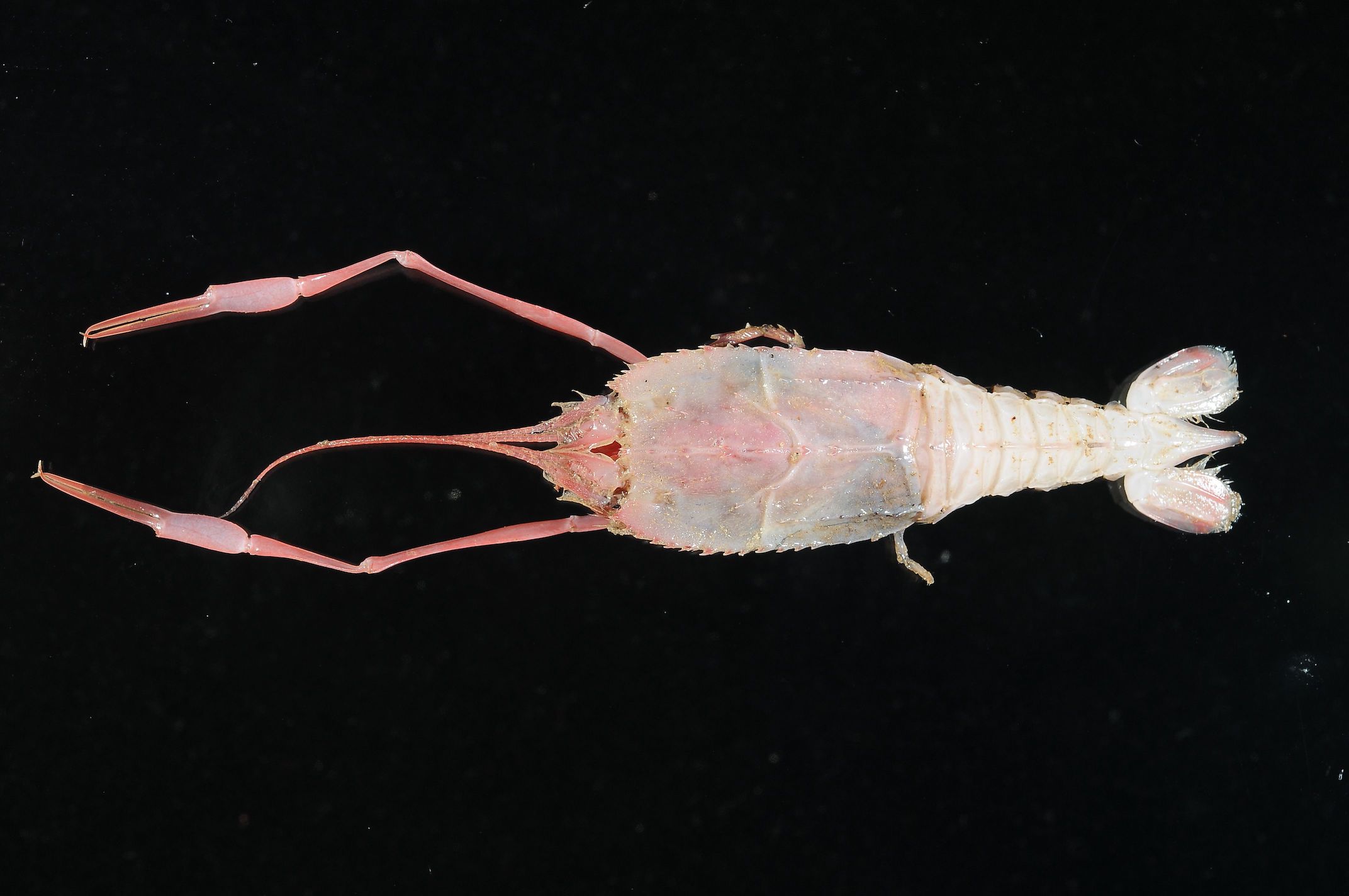
In the profound darkness of the ocean’s depths, organisms face a choice concerning their visual capabilities. Some species evolve specialized eyes that grow to astonishing sizes, as seen in creatures like the giant squid or owl fish. Alternatively, there’s the option to abandon the concept of eyes altogether. It’s the latter scenario that introduces us to an intriguing case: the “blind lobsters,” a peculiar group of 38 lobster-like crustaceans known as Polychelidae. These creatures exclusively inhabit the deep sea, dwelling at depths exceeding 5,000 meters (16,000 feet). Members of this group typically exhibit either absent or vestigial eyes, along with reduced or entirely absent eye stalks.

However, their lack of eyesight isn’t the most remarkable aspect of these creatures. Unlike typical lobsters, which possess two claws, Polychelids boast up to 5 pairs of claws. They feature two larger claws, followed by four smaller yet equally intimidating ones. The name of the group, “Polycheles,” derives from the Greek words meaning “many-clawed.”

While one might assume scientists are primarily intrigued by the blind, multi-clawed nature of these creatures. But they are complex. Scientists and Poychelids alike. Polychelid bodies provide evidence of a transition from shrimp-like to lobster-like forms. Despite their lobster-like appearance, they lack certain primitive characteristics, such as a pointed telson (back-end) instead of the rounded telson found in typical lobsters. This appearance is similar to another group of unusual crustaceans, Eryon, dating back to the Jurassic and thus making Polychelids somewhat of a living fossil similar to the Coelacanths. Yet intriguingly Eryon dwelled in the warm shallow seas of the Jurrassic. The question of why they migrated to the deep sea remained unanswered—did they seek refuge in these depths, as suggested for other deep-sea taxa? Recent fossil and genetic evidence suggests that they have always inhabited these depths since their evolutionary origins in the middle Jurassic period.
Chang, Su-Ching, Shane T. Ahyong, and Ling-Ming Tsang. “Molecular phylogeny of deep-sea blind lobsters of the family Polychelidae (Decapoda: Polychelida), with implications for the origin and evolution of these “living fossils”.” Molecular Phylogenetics and Evolution 192 (2024): 107998.
Bezerra, Luis Ernesto Arruda, and Felipe Bezerra Ribeiro. “Primitive decapods from the deep sea: first record of blind lobsters (Crustacea: Decapoda: Polychelidae) in northeastern Brazil.” Nauplius 23 (2015): 125-131.






